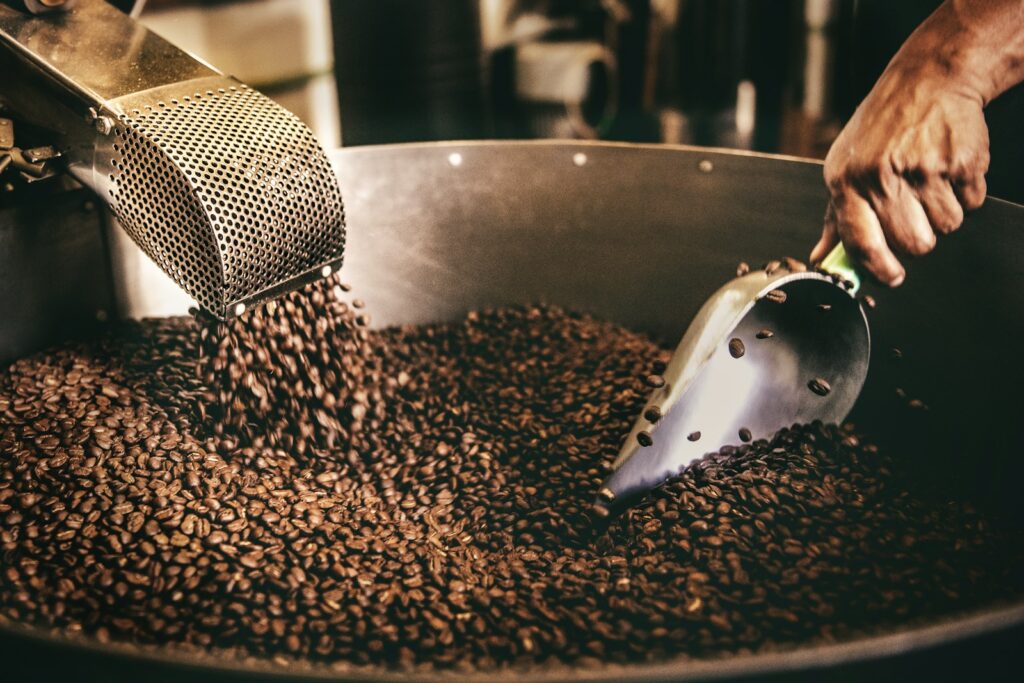In the quest for the perfect cup of coffee, the art of roasting stands as a pivotal process, transforming the humble green coffee bean into a vessel of complex aromas and flavors. This alchemical conversion is not merely a matter of chance but a meticulously controlled science, where temperature and time are the chief architects of taste. Through the lens of scientific studies and real-life examples, we delve into how roasting levels profoundly shape the flavor profile of coffee, creating an intricate tapestry of sensory experiences.
The Roasting Spectrum: From Green to Gold
Coffee roasting is a thermal process that catalyzes chemical reactions within the coffee bean. As the bean absorbs heat, it undergoes a dramatic transformation, characterized by the Maillard reaction and caramelization—the same reactions that give bread its crust and steak its char. These reactions are crucial in developing the bean’s flavor and aroma compounds, known as solubles. The degree of roasting—ranging from light to dark—decisively influences the concentration and balance of these solubles, thereby dictating the coffee’s ultimate taste.
Light Roasts: The Delicate Dance of Acidity and Aroma
Light roasts, often referred to as “Cinnamon” or “City” roasts, are subjected to temperatures between 356°F (180°C) and 401°F (205°C), stopping just after the first crack—a point where the beans pop and expand, similar to popcorn. This level of roasting preserves the bean’s original characteristics and acidity, yielding a coffee with a light body and a plethora of subtle, often fruity or floral, flavor notes.
A study published in the Journal of Food Science highlights how light roasting can enhance the coffee’s antioxidant properties and retain its chlorogenic acid content, which is linked to several health benefits, including reduced inflammation and blood pressure. Light roasts, therefore, not only offer a unique taste experience but also a higher concentration of compounds beneficial to health.
Medium Roasts: Balancing Body and Acidity
Medium roasts, reaching temperatures between 410°F (210°C) and 428°F (220°C), strike a balance between preserving the bean’s original flavors and introducing new taste notes through the Maillard reaction. This roast level is often associated with a more balanced flavor, acidity, and body, making it widely popular among coffee drinkers. The medium roast’s complexity is a testament to the nuanced control over the roasting process, where slight variations in temperature and time can yield a spectrum of flavor profiles, from nutty and chocolatey to spicy and caramel.
Research from the National Coffee Association suggests that medium roasts may offer the best of both worlds: a significant amount of beneficial antioxidants with a richer, more developed flavor than light roasts, without the bitterness that can come with darker roasts.
Dark Roasts: The Bold Transformation
Dark roasts push the beans to temperatures beyond 437°F (225°C), often until the second crack. This intense roasting level leads to a significant decrease in acidity, while bitterness comes to the forefront, accompanied by a heavy body and pronounced roast flavor. The beans’ sugars are more fully caramelized, and the oils are brought to the surface, giving the coffee a shiny appearance.
Interestingly, a study in the Journal of Medicinal Food found that dark roast coffee might be easier on the stomach, reducing the stomach acid compared to lighter roasts. The dark roast’s robust, smoky flavor profile and its potential health benefits make it a preferred choice for those seeking a strong, hearty cup of coffee.
The Interplay of Science and Sensory Experience
The science of coffee roasting is a testament to the complexity of flavor creation, where chemical principles and sensory perceptions intertwine. Each roast level offers a distinct journey through the landscape of taste and aroma, influenced by the bean’s origin, variety, and the roaster’s skill. By understanding the scientific underpinnings of roasting, coffee enthusiasts and professionals alike can refine their methods and choices, tailoring the coffee experience to suit individual preferences and occasions.
As we continue to explore and appreciate the nuances of coffee roasting, we not only become more informed consumers but also deepen our connection to the global tapestry of coffee culture, celebrating the diversity and richness it brings to our daily lives.

